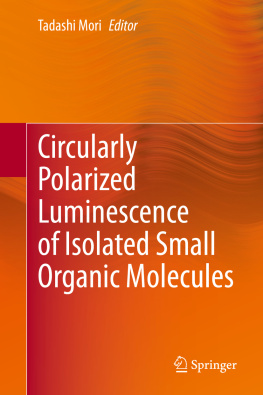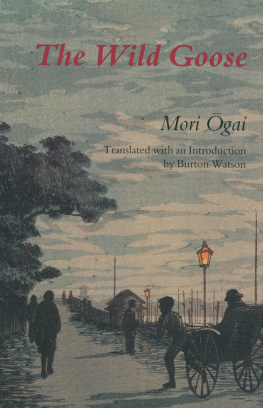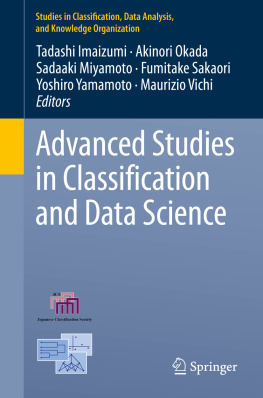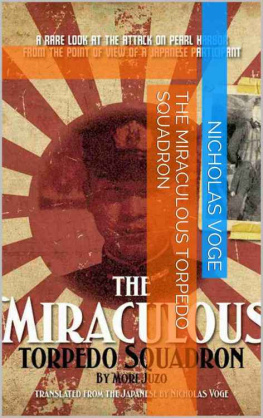Tadashi Mori - Circularly Polarized Luminescence of Isolated Small Organic Molecules
Here you can read online Tadashi Mori - Circularly Polarized Luminescence of Isolated Small Organic Molecules full text of the book (entire story) in english for free. Download pdf and epub, get meaning, cover and reviews about this ebook. year: 2020, publisher: Springer Singapore, genre: Politics. Description of the work, (preface) as well as reviews are available. Best literature library LitArk.com created for fans of good reading and offers a wide selection of genres:
Romance novel
Science fiction
Adventure
Detective
Science
History
Home and family
Prose
Art
Politics
Computer
Non-fiction
Religion
Business
Children
Humor
Choose a favorite category and find really read worthwhile books. Enjoy immersion in the world of imagination, feel the emotions of the characters or learn something new for yourself, make an fascinating discovery.
- Book:Circularly Polarized Luminescence of Isolated Small Organic Molecules
- Author:
- Publisher:Springer Singapore
- Genre:
- Year:2020
- Rating:3 / 5
- Favourites:Add to favourites
- Your mark:
- 60
- 1
- 2
- 3
- 4
- 5
Circularly Polarized Luminescence of Isolated Small Organic Molecules: summary, description and annotation
We offer to read an annotation, description, summary or preface (depends on what the author of the book "Circularly Polarized Luminescence of Isolated Small Organic Molecules" wrote himself). If you haven't found the necessary information about the book — write in the comments, we will try to find it.
Tadashi Mori: author's other books
Who wrote Circularly Polarized Luminescence of Isolated Small Organic Molecules? Find out the surname, the name of the author of the book and a list of all author's works by series.
Circularly Polarized Luminescence of Isolated Small Organic Molecules — read online for free the complete book (whole text) full work
Below is the text of the book, divided by pages. System saving the place of the last page read, allows you to conveniently read the book "Circularly Polarized Luminescence of Isolated Small Organic Molecules" online for free, without having to search again every time where you left off. Put a bookmark, and you can go to the page where you finished reading at any time.
Font size:
Interval:
Bookmark:
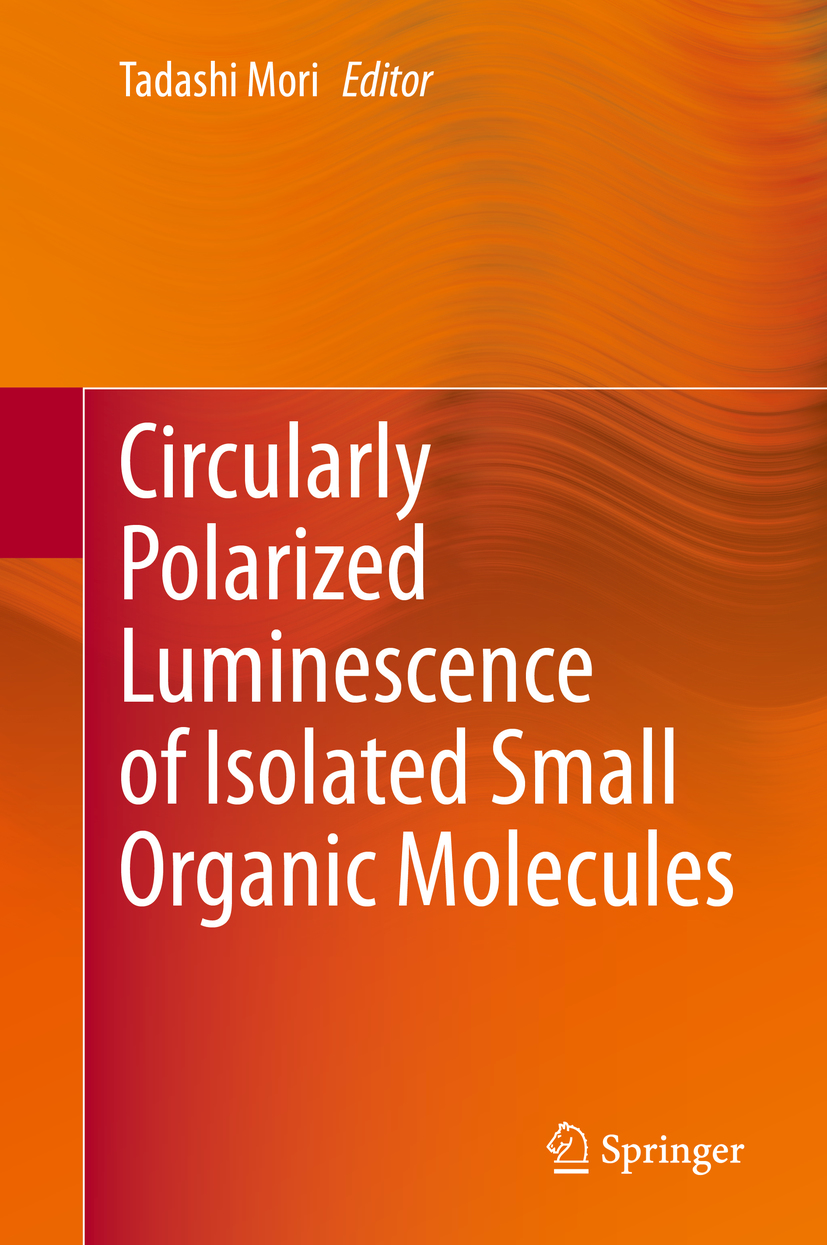

This Springer imprint is published by the registered company Springer Nature Singapore Pte Ltd.
The registered company address is: 152 Beach Road, #21-01/04 Gateway East, Singapore 189721, Singapore
Circularly polarized luminescence (CPL) is one of the optical properties of chiral materials that measures the intensity difference between the left and right circularly polarized spontaneous emission from an intrinsically chiral fluorophore or fluorophore in a chiral environment. Therefore, CPL can be considered as an emission analog of circular dichroisms (CD). While tremendous efforts have been devoted to characterize the observed CD based on the structure of the molecule, successfully generating the so-called structurechiroptical property relationships, such study on the CPL has been hitherto rather limited, due primarily to the instrumental limitations. As the CPL measurement becomes more accessible, the related study has been more concerned, particularly in this decade. Because the CPL responses are fundamentally based on the (emissive) excited state of the fluorophore, this property can be also used to effectively probe the configurational and/or conformational features of a chiral molecule in its electronic excited states. The degree of circular polarization is usually quantified by the dissymmetry factor, i.e., the relative intensity difference of left and right circularly polarized absorption (in CD) or emission (in CPL), respectively. Theoretically, the degrees of these are characterized by the intensity and orientation of electric and magnetic transition dipole moments of the relevant transition. These features are not easily deduced from the molecular structure alone, but the quantum chemical calculations, especially with the ansatz equivalent or superior to the cost-efficient time-dependent density functional theory, are ordinarily respectable for accurately reproducing these values and better understanding of the relationship, although a reliable yet accessible general calculation is still in the developing stage. The differences between CPL and CD (of the emissive state) are often small, as the structural difference between the thermally equilibrated ground state and the excited state, particularly of fluorescent -systems, is relatively minor, and can also be significant in some cases, where nature of emission state, their structural relaxation in the excited state, effect of forbidden state, vibrational coupling, as well as excitonic coupling may play a substantial role. A complete understanding of all these and other factors are definitely required in order to fully understand the CPL characteristics of the chiral substances. While a number of investigations have addressed and disclosed some of these issues, more studies on the appropriate model systems are certainly anticipated to better comprehend the structureproperty relationships for the CPL response.
This book comprehensively collects leading research on recently advanced CPL of small organic molecules, mostly in their isolated states, providing a status quo of the CPL chemistry that will be useful for scientists, researchers, and engineers in general, and is particularly useful for photophysical chemists, organic chemists, supramolecular chemists, spectroscopists, chemical engineers, and others in chemistry-related fields. As compared to lanthanide-based fluorophores, the studies on the organic molecule-based CPL behavior and preparations of CPL-responsive organic molecule are in emerging phase with the relatively smaller dissymmetric factors, but has been extensively attracted in recent years, since chiral organic molecules are potentially more useful in practical applications, as their fluorescence intensity, wavelength, and degree of dissymmetry can be rationally modulated through structural modifications.
This book begins with a short introductory chapter on molecular CPL, and the following chapters of this book consist of detailed descriptions of state-of-the-art advancement of all convincing CPL-responsive organic molecules, classified by the type of inherent chirality as axial chirality in biaryls (by Imai), planar chirality in cyclophanes (by Morisaki), helical chirality in helicenes (by Crassous and Hasobe), distorted chirality in dipyrromethene-related dyes (by Hall and de la Moya Cerero), and other relatively new and unique chiral molecules (by Mori). The book also covers future applications in areas such as advanced imaging and information technologies (by Nakashima). Most of the studies described here are rather focused on the structureproperty relationship of relatively simple molecules investigated in non-aggregated form in solution, and also includes some recent progresses on supramolecular behaviors in hostguest interaction and aggregation formation (by Haino, Abbate, and Liu). The extended photophysical processes such as excimer formation as well as delayed fluorescence are also thought-provoking in terms of the CPL responses, which are also addressed in this book (by Lacour and Pieters). Last but not least, this book also highlights the recent development of commercially available CPL instrument (by Suzuki) as well as time-resolved CD spectroscopy (by Araki), to facilitate the further development and future design of CPL molecules. In order to make each contribution complete in itself, there is some inevitable overlap among the chapters.
Reports and studies on CPL materials, especially of organic systems, are rapidly increasing. Accordingly, it is difficult to cover all aspects of this ongoing active research in one book. However, this book on the CPL of isolated organic molecules serves the purpose of providing valuable information and some insights into the industry, academics, and researchers who are searching for current state of this emerging CPL research area, hoping that the book will stimulate further academic and applied research and promote the industrial applications of organic molecule-based CPL-response materials.
Font size:
Interval:
Bookmark:
Similar books «Circularly Polarized Luminescence of Isolated Small Organic Molecules»
Look at similar books to Circularly Polarized Luminescence of Isolated Small Organic Molecules. We have selected literature similar in name and meaning in the hope of providing readers with more options to find new, interesting, not yet read works.
Discussion, reviews of the book Circularly Polarized Luminescence of Isolated Small Organic Molecules and just readers' own opinions. Leave your comments, write what you think about the work, its meaning or the main characters. Specify what exactly you liked and what you didn't like, and why you think so.

